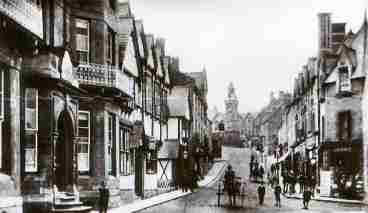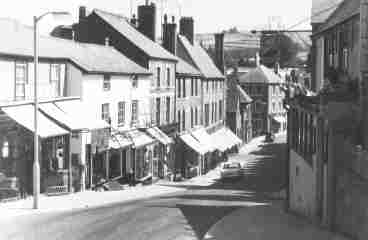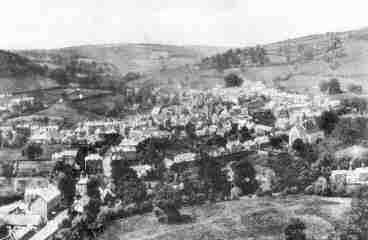Broad Street looking up towards the clock tower.
|
View looking down Broad Street, 1960's. In the right foreground is
The George and Dragon, one of Knighton's oldest buildings, dating back
to 1637. Some of the wood from the pews of the church demolished in
1877 was apparently used in the wainscoting of the hotel.
|
Knighton from Kinsley Hill. The English name Knighton means literally,
'Knights Town'. It has been suggested that this refers to horsemen who
would have patrolled Offa's Dyke, rather than to a permanent garrison.
|
View from the Garth, Knighton. This is the lower Teme Valley looking
west, or upstream, towards Shropshire. The English/Welsh border runs
down the centre of the valley.
|





